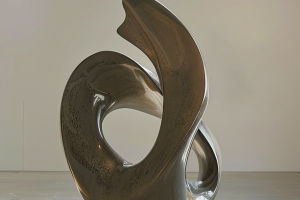Have you ever wondered how technology is reshaping the world of painting? The rise of digital tools has sparked a lively debate: Is digital painting just as valuable as traditional methods, or does it fall short of the authentic touch?
This discussion is more than just a comparison of tools—it's about creativity, expression, and how artists adapt to new possibilities.
Let's dive into the fascinating contrast between digital and traditional painting, and what each brings to the canvas.
What Defines Traditional Painting?
Traditional painting involves physical materials like canvas, brushes, and paint—oil, acrylic, watercolor, or pastels. It's tactile and often unpredictable. The texture of the canvas, the thickness of paint, and the brush movements all combine to create unique results. Many artists treasure this hands-on process because it engages the senses directly.
The physicality can influence the artist's emotional connection to their work, offering a rich, sensory experience that many find deeply satisfying.
The Rise of Digital Painting
Digital painting uses software and hardware such as tablets, styluses, and computers. Artists can create with infinite color palettes, undo mistakes instantly, and experiment with layers and effects. Digital tools open up a world of flexibility and efficiency.
For instance, textures, lighting effects, and blending can be adjusted in ways impossible with traditional materials. It's a playground for innovation, enabling artists to push creative boundaries without material costs or time constraints.
Advantages of Traditional Art
Traditional painting offers a tactile experience unmatched by digital media. The physical interaction with brushes and paint can lead to spontaneous, unpredictable effects that add character to the artwork. The uniqueness of each brushstroke and the layering of paint produce a depth and richness that digital tools sometimes struggle to replicate.
Furthermore, traditional art carries historical and cultural weight, linking contemporary artists with centuries of artistic heritage.
Benefits of Digital Painting
Digital art excels in versatility and convenience. Artists can easily experiment with different styles, adjust compositions, and access endless color choices. The ability to save multiple versions, use layers, and incorporate digital effects makes digital painting ideal for fast-paced environments like game design or animation.
Additionally, digital art can be shared instantly worldwide, reaching audiences far beyond local galleries, which broadens access and opportunity for artists.
Challenges Faced by Traditional Artists
Traditional painting requires physical materials that can be costly and sometimes wasteful. Artists need space, time, and patience, and mistakes may be harder to correct. Moreover, traditional art often requires framing and shipping, which limits its accessibility in the digital age.
While it offers a rich sensory experience, it demands significant effort and resources to produce and share work on a large scale.
Digital Painting's Limitations
Despite its advantages, digital art sometimes faces criticism for lacking "soul" or authenticity. Some argue that the ease of undoing mistakes or replicating effects diminishes the sense of risk and personal touch. The reliance on technology means digital works can be vulnerable to file corruption or software obsolescence.
Also, the tactile sensation and material texture are missing, which some artists and collectors find essential.
Bridging the Gap: Hybrid Techniques
Many contemporary artists blend traditional and digital methods to create hybrid artworks. For example, a painting might start with a pencil sketch on paper, then be scanned and digitally colored or enhanced.
This combination harnesses the strengths of both worlds—retaining the texture and spontaneity of traditional art while benefiting from digital flexibility. Hybrid techniques reflect the evolving nature of art in the 21st century, where boundaries are fluid.
How Technology Shapes Creativity
Technology does more than change tools; it influences creative thinking. Digital painting encourages experimentation without fear of permanent errors. This freedom can lead to bold, innovative designs. Traditional art, by contrast, emphasizes deliberation and mastery of physical techniques.
Both approaches foster creativity but in different ways—one through exploration, the other through tactile engagement.
The Role of Audience and Market
The rise of digital art platforms has expanded the art market. Online galleries and social media allow digital artists to reach global audiences quickly. Traditional art still holds significant value, especially in galleries and auctions, but digital art's accessibility challenges the norms of art ownership and distribution.
Collectors and enthusiasts now navigate a diverse landscape where both digital and traditional works coexist and influence each other.
What Does the Future Hold?
The future of painting likely lies in coexistence rather than competition. As technology advances, digital tools will become even more sophisticated, while traditional methods continue to evolve through new materials and techniques.
Artists will keep choosing the mediums that best express their vision and emotions. This blend of old and new promises a richer, more diverse art world.
Expert Insight
Matthew Ritchie, contemporary artist and lecturer, has noted that digital tools "open pathways to creative exploration while still drawing upon centuries of traditional artistic practice."
Engage with the Debate
What's your take? Do you feel the magic of traditional painting or the innovation of digital art resonates more? Have you tried both, and how do they affect your creative process? Share your experiences or favorite artworks—exploring these questions together enriches our understanding of art's evolving landscape.
Remember, creativity has no single path, and the tools we choose only shape the story we want to tell.

